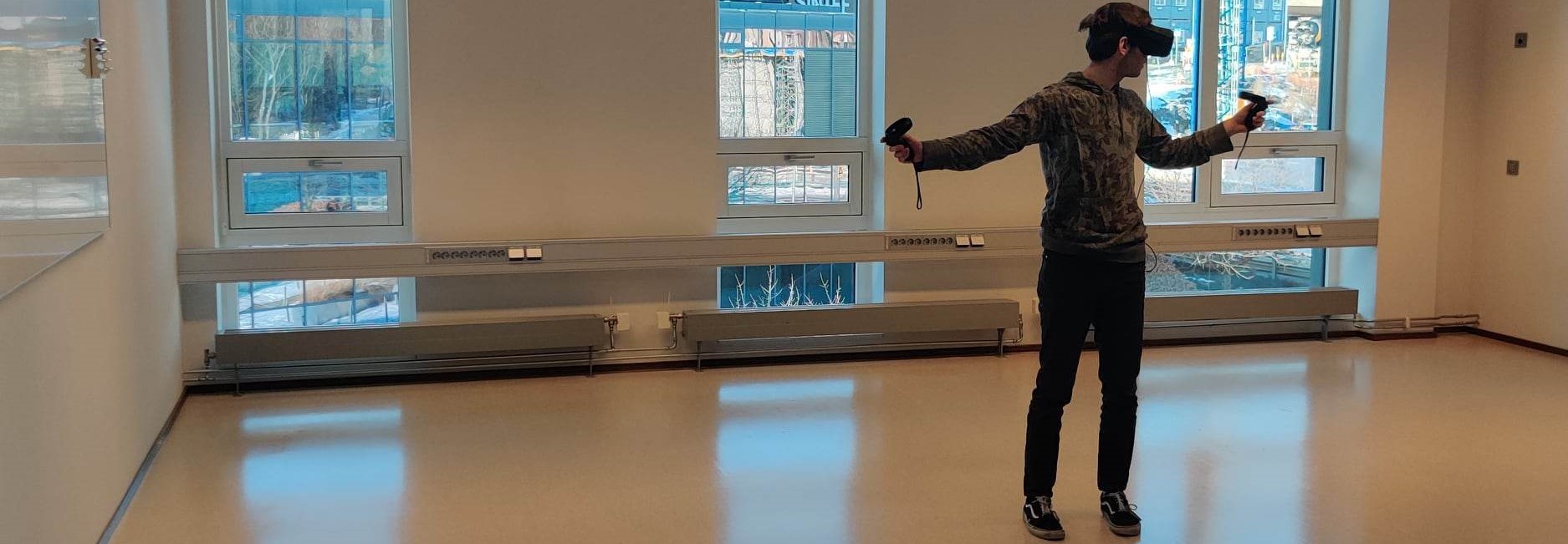What is Redirected Walking?
Virtual reality (VR) allows us to dive into virtual worlds and experience them in first person. Several of our senses can be used in this experience, and the senses of vision, sound and touch work reasonable well. What we can also achieve is the sense of our own body, the so-called proprioperceptive or kinesthetic sense.
When we used VR headsets today, programs react to the motion of the head in real time, and mimic those moves in the virtual world. To some extent, also hand and body pose can be tracked or deduced. However, most of the time, we sit in a chair and to move our first-person avatar. This feels unnatural and restrictive as it removes a key physical aspect of moving around in the virtual environment.
Wearing VR headsets, we can walk around in the real world, and by way of of tracking, this motion can be brought into the virtual world as well. This translation creates a high level of immersion but it is limited. The physical space in the real-world is limited by things such as walls and obstacles in the real world, where these don’t exist in the virtual world. At this point, Redirected Walking appears.
The term describes the ”perceptually unnoticeable virtual camera motion offset from a user’s movement”. Essentially, the system assesses the layout of the real and the virtual world, and works continually to rotate the virtual world’s coordinate system against the real-worlds coordinate system.
Specific question for this thesis
In this thesis, you will extend our knowledge of redirected walking. You will make use of the software that we have already developed and extend it to conduct new research. Our own developments are documented in the master theses listed in the sidebar.
The existing software makes use of Unreal Engine on Windows, OpenXR and SteamVR, with VR devices comprising Oculus Rift and Quest headsets as Vive trackers.
In our research so far, we have considered the basic noticability and acceptance of redirected walking using 3 strategies: changing the translation of linear speed from real to virtual world, changing rotation angle when the player's head rotates, and changing the walking angle when the player walks in an arc.
In a real system, we cannot stick to just a single modification. It limits our opportunities to keep the player inside the constraints of the real-world area before we must break immersion and show real-world obstacles to them. Instead, we should use all of these options together to let players navigate around obstacles.
This integration, however, although based on well-known principle and already implemented in our system, must be combined and parameterized dynamically to maximize the usefulness of redirect walking. At the same time, player ability to notice the redirection must be kept low and their acceptance of redirection high.
Your task in this thesis is to develop sensible combinations of the redirected walking algorithm and explore there parametrization in an incremental series of user studies.
Learning outcome
Experience:
- in formulating, investigating and answering research questions
- with the development of VR scenarios with Unreal Engine
- conducting, evaluating and interpreting user studies
Conditions
We expect that you:
- have been admitted to a master's program in MatNat@UiO - primarily PROSA
- take this as a long thesis
- will participate actively in the weekly SINLab meetings
- are present in the lab and collaborate with other students and staff
- are interested in and have some knowledge of C/C++ programming
- are interested in conducting user studies
- are willing to share your results on Github
- include the course IN5060 in the study plan, unless you have already completed a course on classical (non-ML) data analysis
